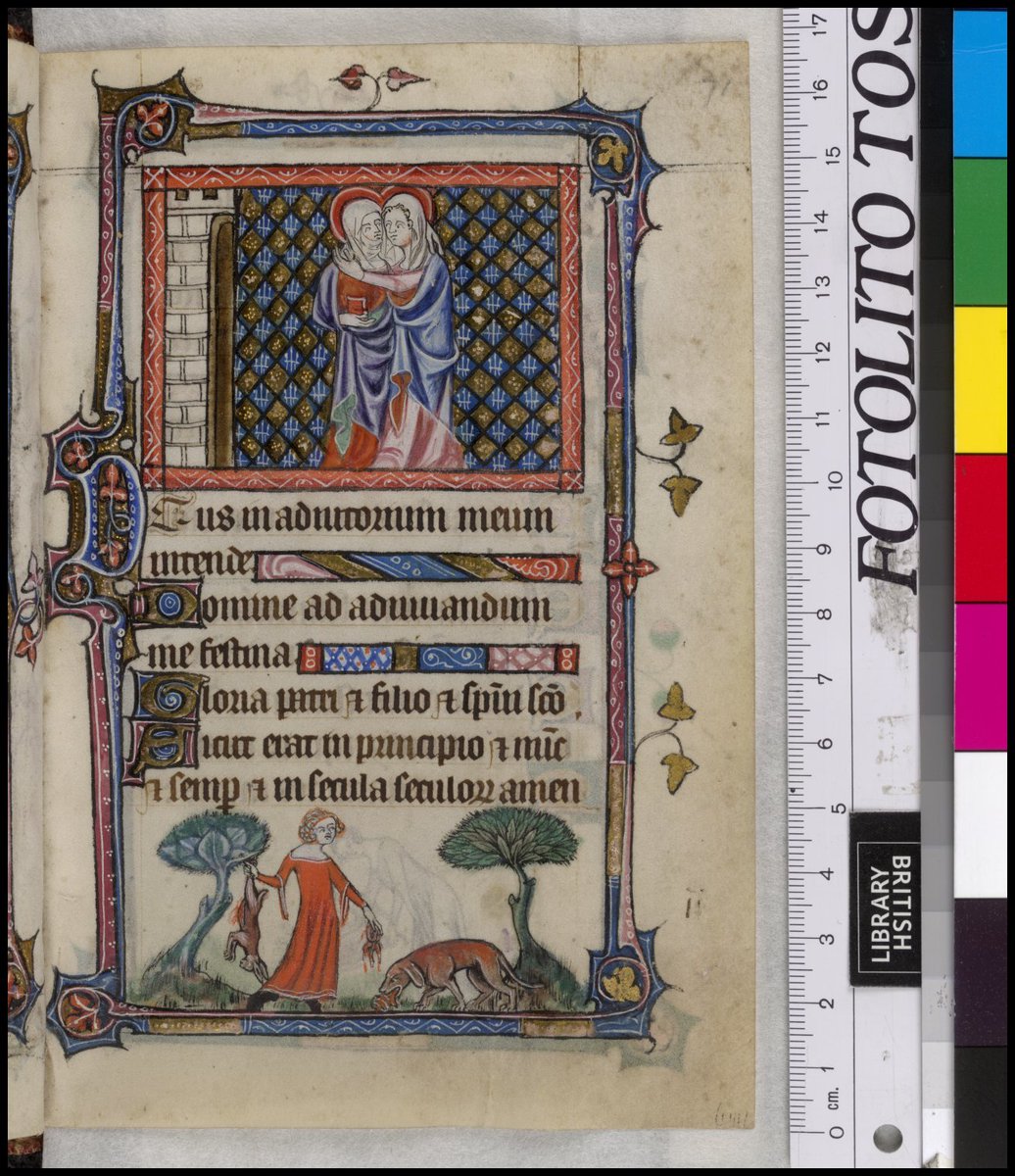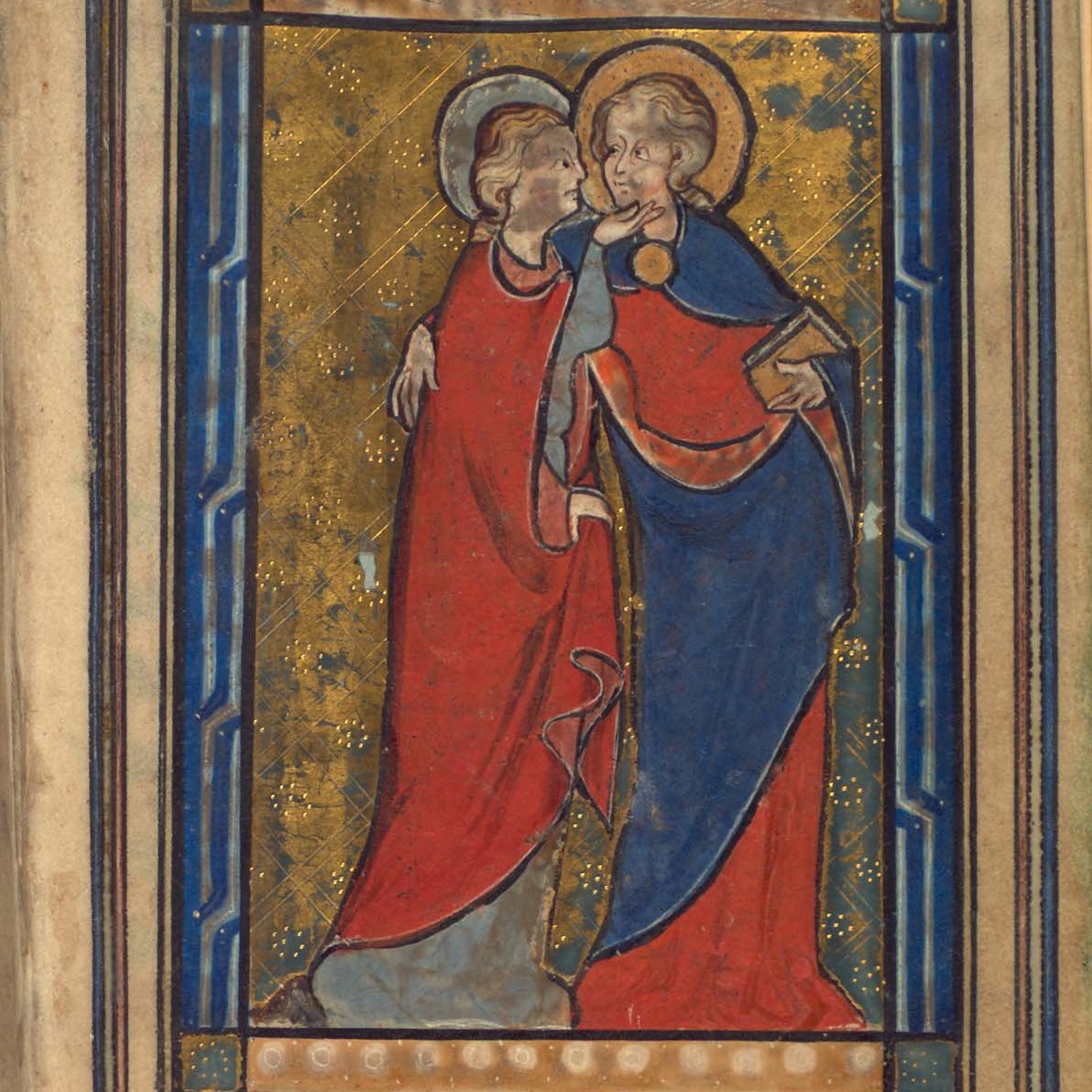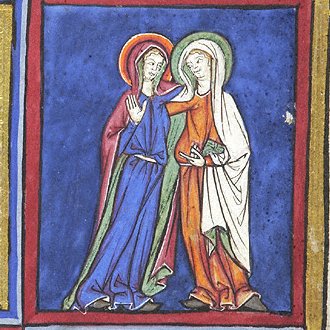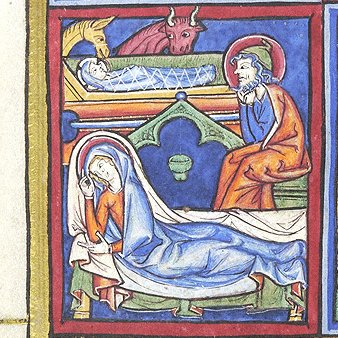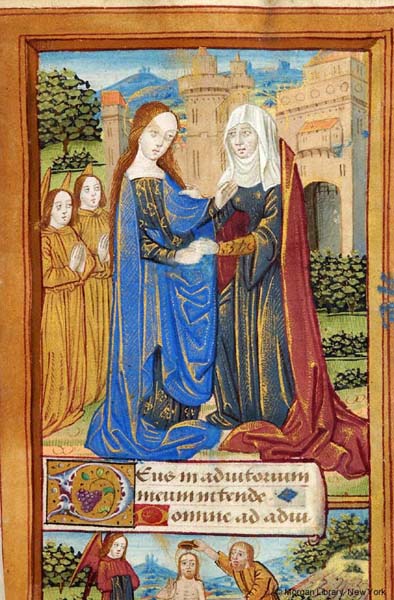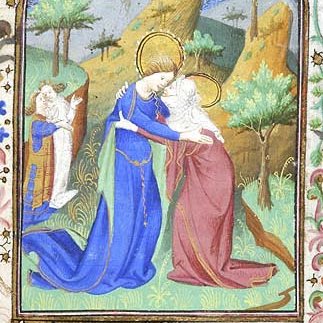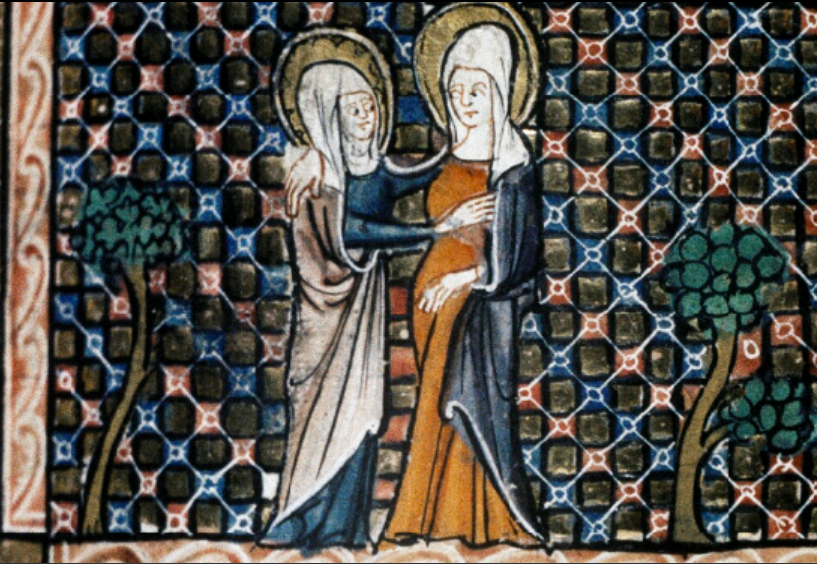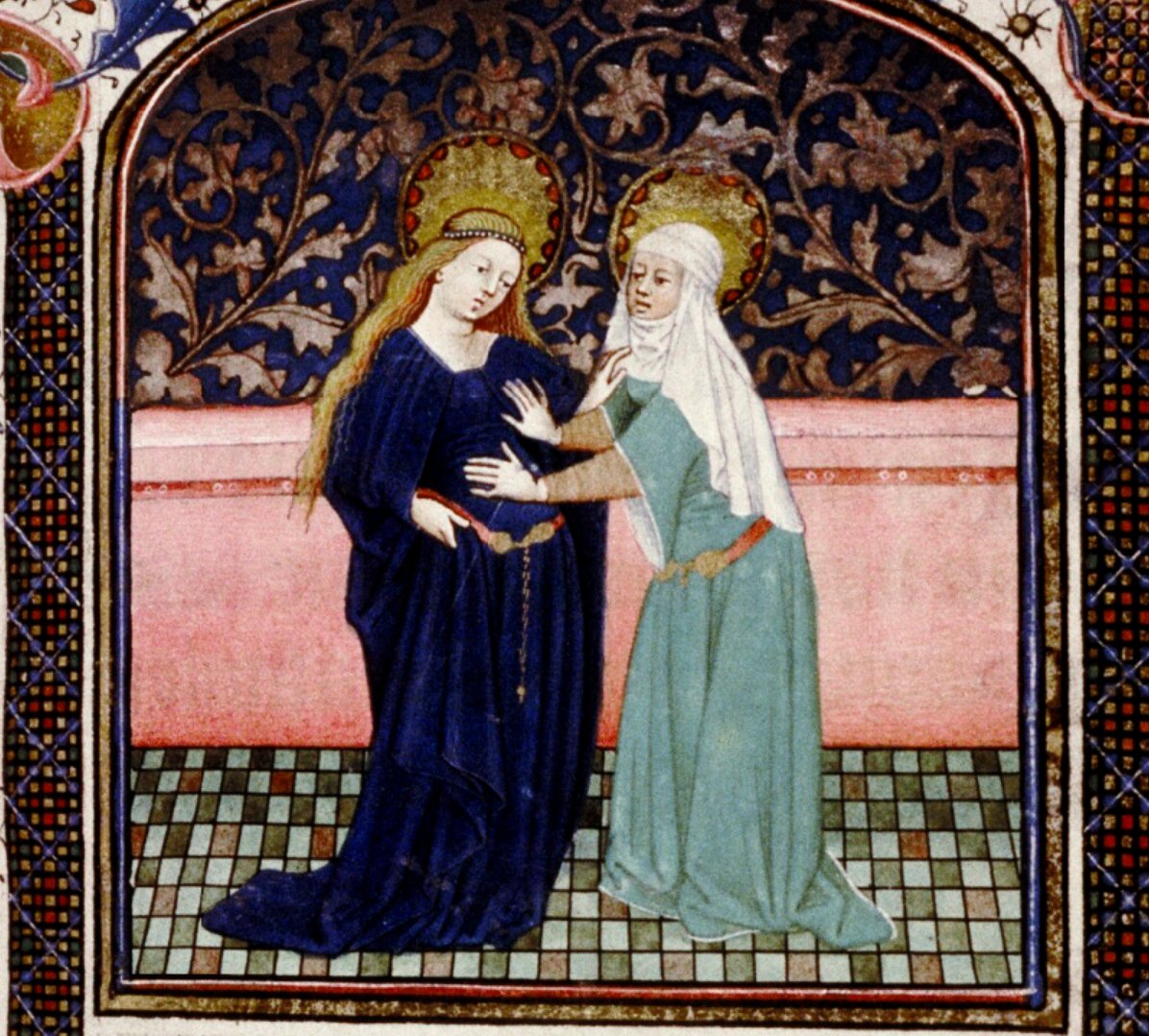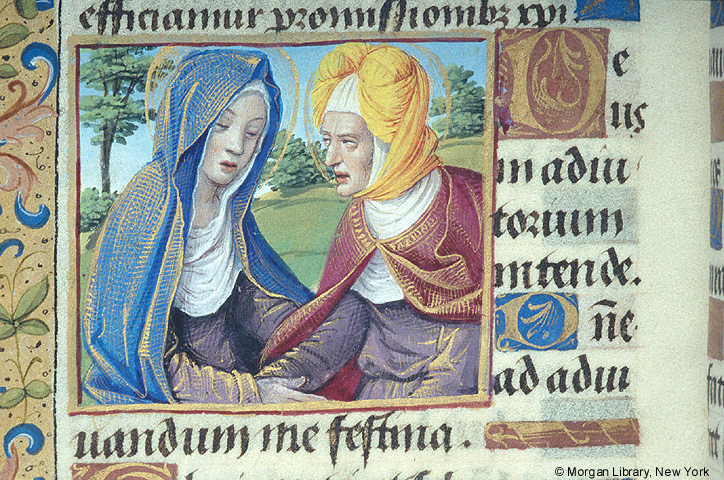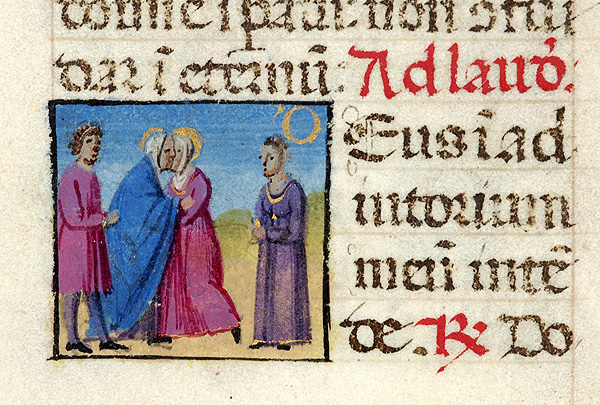Everyone loves gal pals! Just women being friends!
Here& #39;s a thread of medieval illustrations of the Virgin Mary and Elizabeth that suggest that they were gay for each other.
(Morgan Library, MS M361, f. 033r) #MedievalTwitter
Here& #39;s a thread of medieval illustrations of the Virgin Mary and Elizabeth that suggest that they were gay for each other.
(Morgan Library, MS M361, f. 033r) #MedievalTwitter
I *love* this one. The expressions! The fabric! The chin chuck!
FUN FACT: chin chucks were a well-known sexual trope in pre-modern Europe. So this is barely subtext.
(BL, MS Egerton 2781, f. 11v)
FUN FACT: chin chucks were a well-known sexual trope in pre-modern Europe. So this is barely subtext.
(BL, MS Egerton 2781, f. 11v)
Another from the same manuscript. I dunno who the artist is *but* this manuscript was probably intended for the widow Isabel de Byron of London, so they thought she would like this.  https://abs.twimg.com/emoji/v2/... draggable="false" alt="🤔" title="Denkendes Gesicht" aria-label="Emoji: Denkendes Gesicht">
https://abs.twimg.com/emoji/v2/... draggable="false" alt="🤔" title="Denkendes Gesicht" aria-label="Emoji: Denkendes Gesicht">
(BL, MS Egerton 2781, f. 62)
(BL, MS Egerton 2781, f. 62)
Very sweet. So innocent, yes?
WELL, let& #39;s take a look at the full page! [TW: animal violence in next tweet]
(BL, MS Yates Thompson 13, f. 71)
WELL, let& #39;s take a look at the full page! [TW: animal violence in next tweet]
(BL, MS Yates Thompson 13, f. 71)
This is the full manuscript page. Notice the woman at the bottom, feeding a slaughtered hare to her dog.
What did hares symbolize? *Sodomy.* Hares were believed to have endless anal sex & to grow a new anus every year (yes, really). So this woman & the hare....are interesting.
What did hares symbolize? *Sodomy.* Hares were believed to have endless anal sex & to grow a new anus every year (yes, really). So this woman & the hare....are interesting.
Me, finding queerness in manuscripts.
I love the many examples that have Mary and Elizabeth embracing, then show Mary and Joseph sitting on opposite sides of the room, not looking at each other.
(Morgan Library, Ms m730, f. 011v)
(Morgan Library, Ms m730, f. 011v)
Her hand is going for the chin chuck again! The two angels are like "yes, we ship it."
(Morgan Library, MS m129, f. 028r)
(Morgan Library, MS m129, f. 028r)
In the background, the woman is explaining it to her husband. "Harold, they& #39;re lesbians."
(Morgan Library, MS m453, f. 053r)
(Morgan Library, MS m453, f. 053r)
This is a mostly silly thread, but -- as I& #39;ve said before -- we need to think about what kinds of common imagery offered queer readers & audiences a place for safe & deniable expression of queerness. https://twitter.com/erik_kaars/status/1277210319736074242?s=20">https://twitter.com/erik_kaar...
There are plenty of examples of queerness surviving in manuscripts, such as love letters (erotic ones!) between women. Queer ppl at least sometimes expressed queer desire in print. We cannot explain away ALL homoeroticism as ahistorical https://twitter.com/erik_kaars/status/1070308027096539137">https://twitter.com/erik_kaar...

 Read on Twitter
Read on Twitter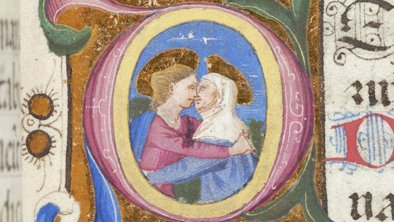
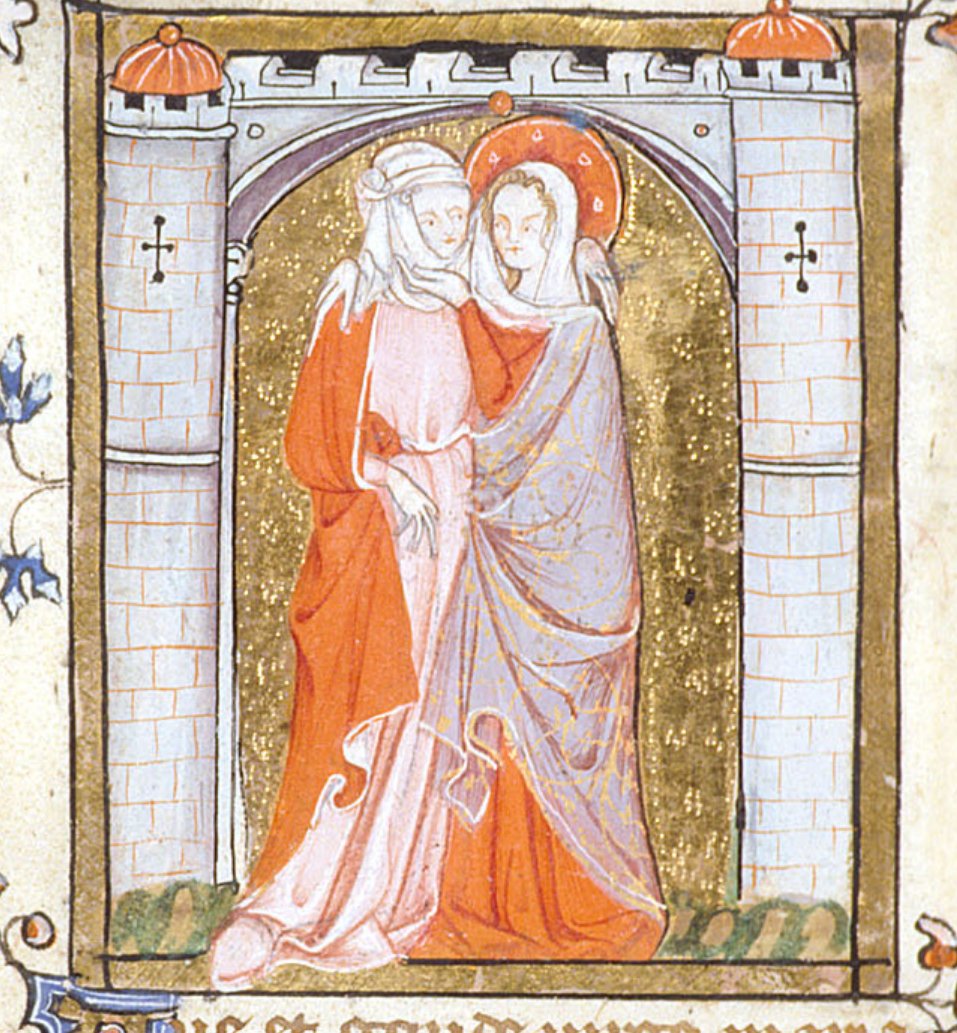
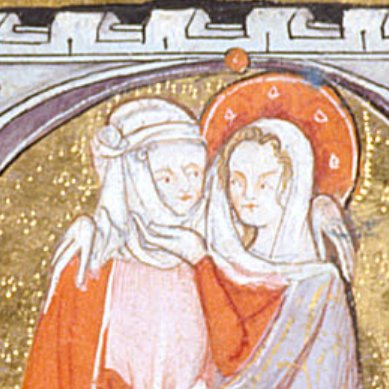
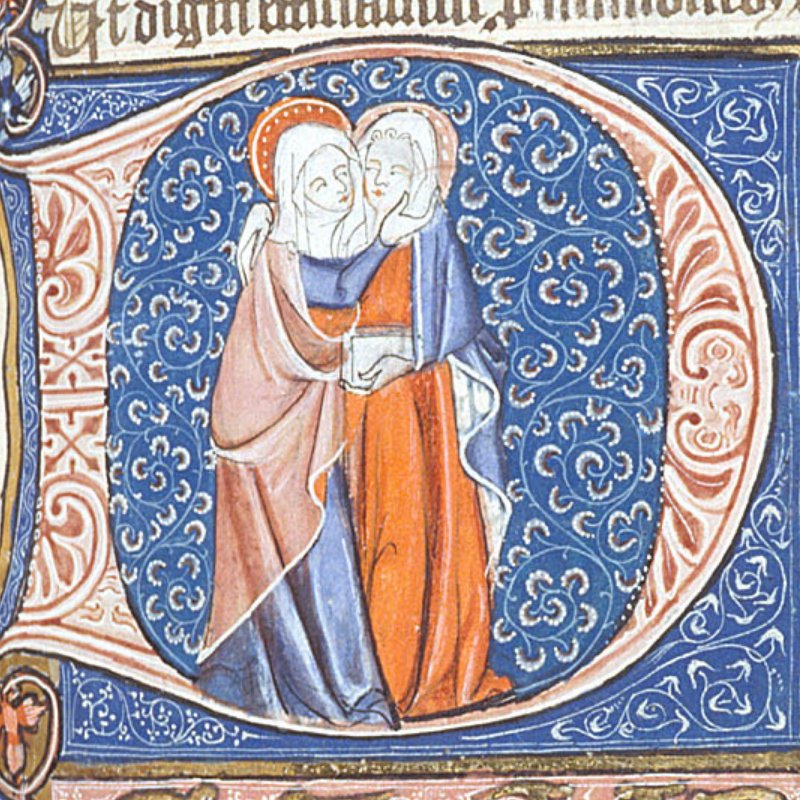 (BL, MS Egerton 2781, f. 62)" title="Another from the same manuscript. I dunno who the artist is *but* this manuscript was probably intended for the widow Isabel de Byron of London, so they thought she would like this. https://abs.twimg.com/emoji/v2/... draggable="false" alt="🤔" title="Denkendes Gesicht" aria-label="Emoji: Denkendes Gesicht">(BL, MS Egerton 2781, f. 62)" class="img-responsive" style="max-width:100%;"/>
(BL, MS Egerton 2781, f. 62)" title="Another from the same manuscript. I dunno who the artist is *but* this manuscript was probably intended for the widow Isabel de Byron of London, so they thought she would like this. https://abs.twimg.com/emoji/v2/... draggable="false" alt="🤔" title="Denkendes Gesicht" aria-label="Emoji: Denkendes Gesicht">(BL, MS Egerton 2781, f. 62)" class="img-responsive" style="max-width:100%;"/>
 Very sweet. So innocent, yes?WELL, let& #39;s take a look at the full page! [TW: animal violence in next tweet](BL, MS Yates Thompson 13, f. 71)](https://pbs.twimg.com/media/EfZVPQrX0AMD6_-.jpg)
